how to clean a gas oven
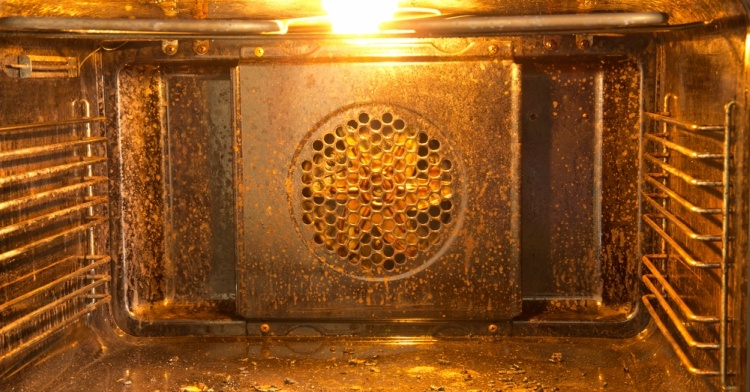
How To Clean An Oven Without Chemicals
Of all the things in our homes we know we should be cleaning more often, the most stressful just might be the oven. After all, the place where we cook our food should, arguably, be the cleanest spot in the house, but getting it clean – especially after a rogue roast or overflowing pie – can be pretty tricky. We're always looking for effective ways to do it that also don't require hours upon hours of effort. On top of all that, we know that a lot of you get nervous about the chemicals in cleaning products, so no run-of-the-mill, store-bought specialty cleaner is going to cut it. Plus, those cleaners are pretty expensive, and we're still big fans of frugality!
Now, let's clear something up right off the bat, because we hear the rest of you out there, too: "chemicals" are not inherently bad; far from it. In fact, nearly everything is, technically speaking, a chemical: water, blood, salt, oils. So when we talk about chemicals in this context, we're using the colloquial – albeit scientifically incorrect – understanding of the word— those purified, prepared, and artificial compounds and substances we couldn't identify by sight, taste or touch if our lives depended on it. We mean the things on the ingredients lists of store cleaners that sound, well, kind of scary. There are none of THOSE in this guide today! Instead, we're giving you the definitive guide to oven cleaning using only the kinds of simple, basic, affordable items you already have in your pantries. Cleaning your oven is about to get more natural and a whole lot easier.
The Dirty, The Clean, And The Easy: Tips For Self-Cleaning Ovens
Self-cleaning ovens are easy, but they're not always simple. Here are some important tips to remember before you hit that button or try an alternative method:
- Self-cleaning ovens can vary depending on when they were produced and on the manufacturer, so always be sure to read your manual – or, if you've misplaced it, Google your brand's instructions! – before running a cleaning cycle.
- Never clean your self-cleaning oven by hand! Part of its self-cleaning abilities comes from a pyrolytic coating on the inside. If you use other cleaners on your oven – even gentle, natural ones! – you'll scrub away that coating, wasting the money you spent on a self-cleaning oven and causing you problems further down the line.
- Be sure to ventilate before starting the cycle: turn on the exhaust fan, open windows, etc.
- Move your pets – especially birds! – far away from the kitchen!
- Remove everything from the oven that isn't attached: empty the warming drawer, and remove the oven racks. (Don't worry— keep reading for tips on cleaning those oven racks!)
- If there's food stuck at the bottom of the oven, remove it, if you can, with a non-scraping cleaning tool. This step will help the self-cleaning cycle be more effective!
- Did the self-cleaning cycle leave some ashy residue behind? Not a problem— use moistened, crumbled newspaper to clean it up instead of wasting paper towels. (Glass oven door the unlucky residue recipient? Keep reading for a special way to take care of it!)
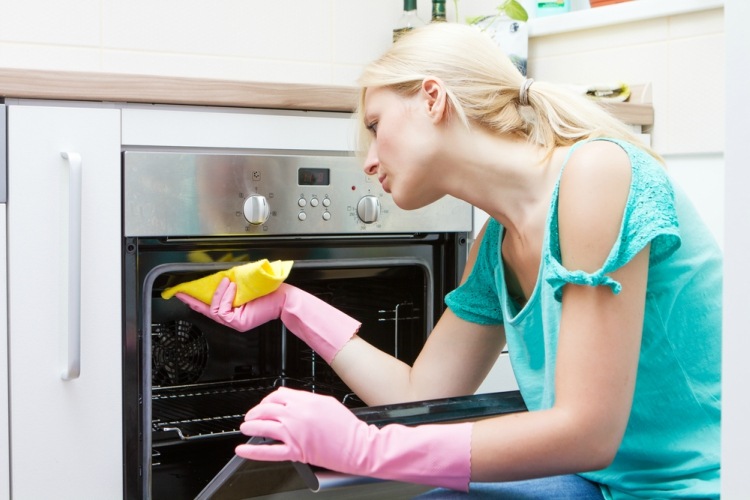
Removing Grease With Elbow Grease: Basic Oven Cleaning, Option 1
Not all ovens have a self-cleaning cycle, so for that, we have to bust out the elbow grease! That doesn't mean, though, that we want to just run out and grab some mysterious, artificial spray. Luckily, that's definitely not required. Instead, we have the option of turning to two tried and true staples: baking soda and vinegar!
Materials
- Water
- Spray bottle
- Baking soda
- A rag
- Vinegar
- A small bowl
Directions
- Remove the oven racks and wash separately. (See below for our favorite method!)
- In the small bowl, create a paste by mixing a few spoonfuls of baking soda with water.
- Spread the baking soda paste all over the inside of the oven, avoiding the oven window. (You'll clean that separately.) Let sit for at least 12 hours, or overnight, then wipe with a wet rag.
- Pour the vinegar into the spray bottle. Spritz the vinegar all over the oven wherever baking soda paste residue remains. Wipe again with a wet rag.
- Put the clean racks back in the oven, and set it to a low temperature for 15 to 20 minutes to dry.
- Use the same baking soda paste to clean the oven door window, but only allow it to sit for 30 minutes. Then just use a clean rag to wipe the window clean.
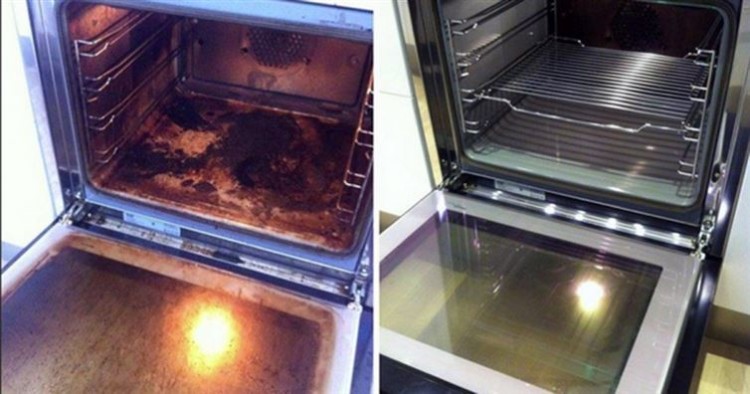
Removing Grease With Elbow Grease: Basic Oven Cleaning, Option 2
Sometimes – like after the holidays or a big party – simple baking soda and vinegar just won't cut it. Or maybe you had a baking disaster that left your oven looking more like a war zone than an appliance. In either and any case, we turn to a surprising-but-effective tool: ammonia. Don't worry, it's not only safe, it's super easy to use.
Materials
- Pot of water
- 1 cup ammonia
- Heat-safe bowl or baking dish
- 1 to 2 teaspoons dishwashing liquid
- 1 quart warm water
- Nylon scrubbing pad
- Kitchen gloves, to protect your skin
Directions
- Preheat the oven to 150 degrees Fahrenheit.
- Bring the pot of water to a boil.
- Once the oven has preheated, turn it back off. Be sure the gas is off and the pilot light is out if you have a gas oven.
- Pour the ammonia into the heat-safe bowl or baking dish, and place on the top rack of the oven. Place the pot of boiling water on the bottom rack. Leave both in the closed oven overnight.
- In the morning, remove both from the oven and set aside for later. Remove the oven racks. Let the oven sit open for 15 minutes to air out.
- Add the dishwashing liquid and warm water to the ammonia. Put on the kitchen gloves, and dip the scrubbing pad in the mixture. Scrub the oven, and watch the caked-on messes fall away easily.
Obviously, this method is one with which you should be a little more careful, but WOW, is it effective!
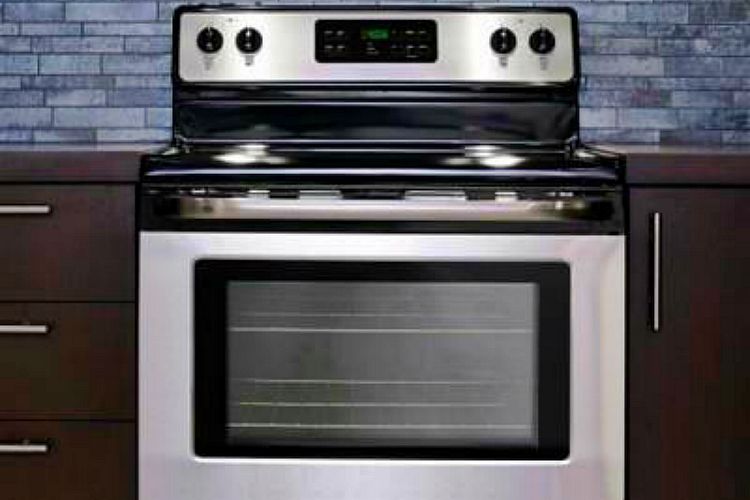
All The Nooks And Crannies: How To Clean Specific Oven Parts
Here's the thing about ovens— there are a lot of parts to consider! We don't even think about many of them, though, until they become a problem: the range hood filter that appears to get brown and greasy overnight; the gaps in the racks that are suddenly closing thanks to build-up; the glass oven door that seems dirtier after we run the self-cleaning cycle. Don't worry! There's a way to take care of all of them.
Range Hood And Exhaust Fan Filter
Materials
- OxiClean (or dish soap)
- Hot water
- Bucket
Yes, OxiClean! We can hear some of you already – "Doesn't that contain artificial chemicals?" – but its two main ingredients are simply sodium carbonate and sodium percarbonate— aka washing soda (or soda ash) and a combination of washing soda and hydrogen peroxide! Both are similar to baking soda, and both are safe. If OxiClean still worries you, you always have the option of their "free" version, or simple dish soap.
Directions
- Fill the bucket with boiling hot water.
- Add a few scoops of OxiClean (or your preferred cleaner).
- Place the filter in the bucket of now-soapy water, and allow it to soak for 10 to 30 minutes.
- If you find simple soaking isn't doing the trick, scrub the filter with a bristle brush.
- Dry the filter completely, then place it back into its spot above your stove.
The average cook should clean her range hood filter about twice a year. However, if you fry food frequently, up that cleaning scheduling to a quarterly clean!
Stovetop
Yes, guys, we know that a stove is different and separate from an oven, but you know what? Most of the time, they're part of the same appliance, and this method's good to know regardless! After all, who wants a sticky, greasy glass stovetop?
Materials
- Hot water
- Dish soap
- Rag
- Sponge
- Baking soda
- 2 to 3 paper towels (or a dry cloth)
Directions
- Add soap to the water to get hot, soapy water.
- Soak the rag in the hot, soapy water.
- Sprinkle baking soda all over the dirty stovetop.
- Lay the soaked rag over the grease stains and other areas where you've sprinkled the baking soda. Let it sit for 5 to 30 minutes, depending on the severity of the mess you're cleaning, then wipe the surface with the cloth.
- Wipe the surface again with the sponge to pick up any excess residue. Dry with the paper towels or washcloth.
Gas Burner Grates
So what to do if you have gas burners and not a glass stovetop? Don't just let those burner grates collect grease and debris. Give them an easy, monthly cleaning:
Materials
- Ziploc bags, 1 for each grate
- Ammonia
- Soap and water
Directions
- Place each grate into its own Ziploc bag.
- Pour a small amount of ammonia into each bag. You want enough to make a small pool within the bag, but you don't need to submerge the grates or waste ammonia.
- Flip the bags upside down and let the grates rest in the ammonia pools that form. Allow to sit overnight.
- In the morning, dump out the grease that has fallen off the grates overnight, thanks to the ammonia and the ammonia fumes. Throw away the bags.
- Scrub the grates with soap and water to fully remove any remaining ammonia. Do not cook with grates that still have ammonia on them.
That's it! A simple trick that makes cleaning your grates SO easy.
Glass Oven Door
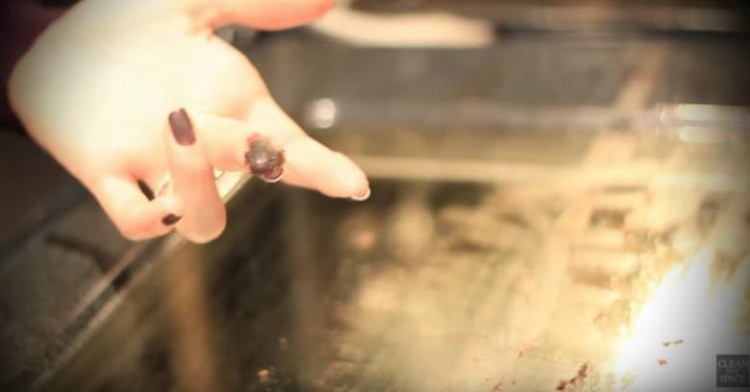
Did running your self-cleaning oven leave some residue behind on your glass oven door? No problem! After the cycle's complete, you can clean it easily.
Materials
- Baking soda
- Water
- Soft cloth
Directions
- Sprinkle some of the baking soda on the sticky inside of the glass door.
- Spray some water on top of the baking soda to form a bit of a paste. Use as little as possible.
- Let the baking soda paste sit, even up to overnight if there's a lot of residue.
- After letting the paste sit and/or in the morning, take the soft cloth and wipe off the baking soda. Voila! Clean oven door.
Oven Racks
Materials
- Old towel
- ½ to 1 cup laundry detergent (use your favorite natural kind!) or dishwashing liquid
- Bathtub, or a bucket large enough for the racks
- Lemon, for scent (optional)
- Non-abrasive sponge
Directions
- Use the towel to line the bottom of the tub or bucket and prevent scratching.
- Place the oven racks into the tub on the towel, and fill with very hot water until the racks are submerged.
- Pour your detergent or soap of choice into the tub, and swirl to dissolve. Add the lemon, if using.
- Let the racks sit in the soapy water for 4 to 10 hours or, if possible, overnight.
- Drain the tub. Use the sponge to wipe away the grease and residue. Your racks will emerge sparkling and good-as-new!
Toaster Oven
No, it's not your regular oven, but come on— how often do you clean your toaster version? That's what we thought.
Materials
Directions
- Unplug the toaster oven and make sure it's completely cool.
- Mix the cream of tartar and water to make a paste.
- Remove the toaster oven racks and crumb tray, and apply some of the paste to them. Put them in the sink to soak.
- Add more of the paste to the sponge, then apply to the interior and exterior of the toaster oven. Dampen the cloth and use it to wipe away the paste and buff everything clean. Use another cloth to dry the toaster thoroughly.
- Clean the racks and the trays in the sink. Dry, and put the toaster back together.
You can use the same materials and a cleaning toothbrush to clean your pop-up toaster, too! It also bears repeating; make sure your toaster oven is completely, absolutely, thoroughly dry before plugging it back in and using it.
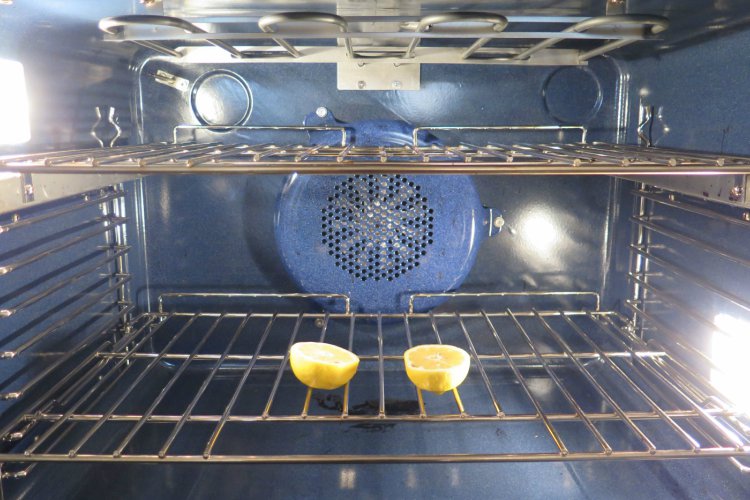
Prevention Partners: Stopping The Messes From Boiling Over
Once you have your oven – and every adjacent component – back to its shining, pristine self, you want to make that clean state last as long as possible. For that, we turn to some of our favorite tried-and-true tricks and trusted pantry-staple partners-in-crime!
Aluminum Foil
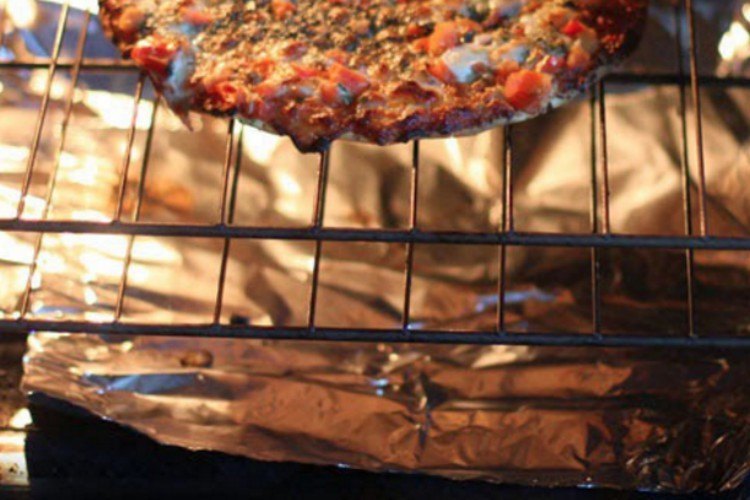
We bet a lot of you know this one! Prevent spills from becoming smoking problems by catching them with a piece of foil. All you need to do is line the bottom of your oven – and your toaster oven! – with aluminum foil. You can leave it in the oven until it starts to build up, then just through the foil away and replace!
Salt
Despite your best efforts, food is going to spill, and it might not even spill on your carefully-arranged tin foil. When that happens, don't worry— just grab the salt! As soon as you notice the spill, turn off your oven and, while it's still residually warm, sprinkle a handful of salt over the spill. Let it sit for a few minutes, then use a spatula to scrape it all up. No more mess! Best of all, when you catch spills quickly in this way, they won't grow into larger, more-difficult-to-clean messes. (We've heard flour is a great option for quick grease clean-up, too!)
Vinegar
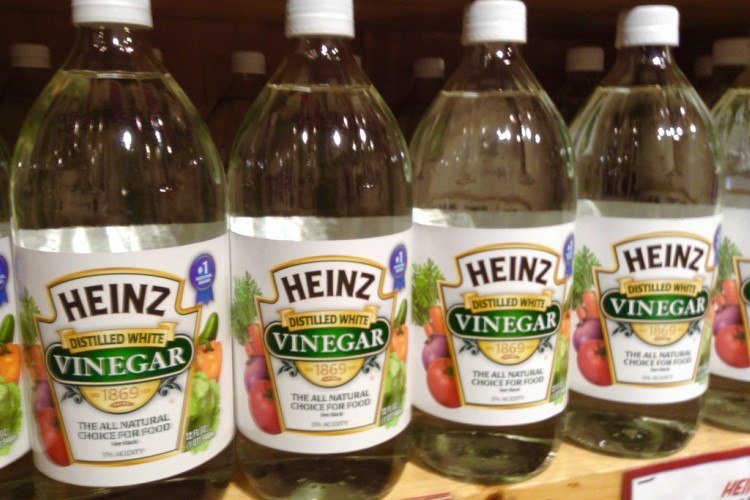
It's shone up already, but it's worth repeating: vinegar's one of the best ways to get and keep your oven and all its accessories clean! Its best use? Fighting grease. Use it on:
- Broiler Pans:
- Hot Plate:
- Grease Splatters:
- Grease Build-up:
Mix 1 cup of apple cider vinegar with 2 tablespoons of sugar, apply to the still-hot pan, and allow to sit for 1 hour. Then wash as normal with minimal fuss and scrubbing.
All you need to bring a greasy hot plate back to life is some regular white vinegar, a sponge, and some elbow grease.
Whether they're on the stovetop, range hood or counters, don't let grease splatters sit any longer than it takes to eat the meal you've just fried. Instead, wipe with a sponge dipped in undiluted vinegar, then follow it up with one dipped in cold water and dry with a cloth.
Fight any build-up inside your oven or on gas grates with a once-a-week wipe-down with a sponge soaked in white vinegar.
Your oven is going to be so beautiful, every guest to your home will think you bought a brand new one. Now YOU tell US: are there any oven-cleaning methods we missed that use natural or simple household materials? How do you keep your oven clean? Will you be trying anything new after reading our guide?
Sources:
For more information and natural cleaning ideas, visit Reader's Digest, One Good Thing By Jillee and Clean My Space.
how to clean a gas oven
Source: https://tiphero.com/chemical-free-oven-cleaning
Posted by: nashpitand.blogspot.com

0 Response to "how to clean a gas oven"
Post a Comment